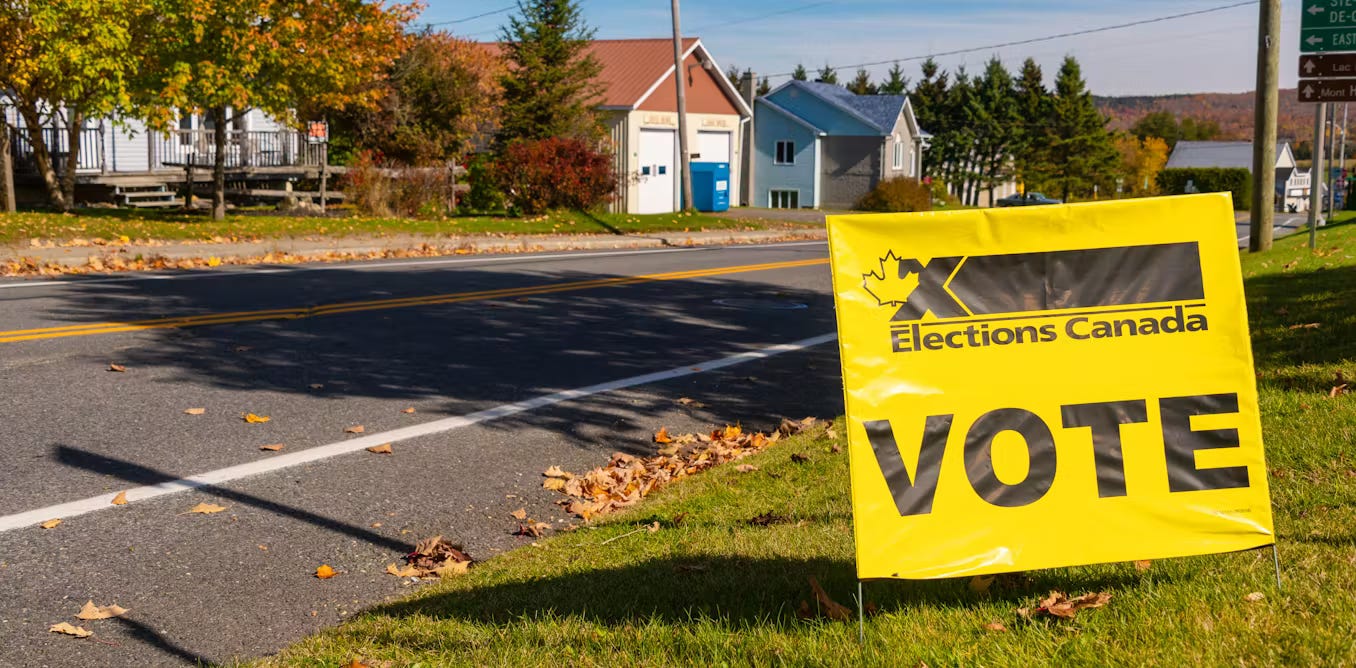First Nations Voters Could Determine Canada's 2025 Federal Election
How First Nations Communities Can Shape Canada's Political Future by Turning Out to Vote
When communities show up to vote, the political apparatus that includes political leaders, staff for major political parties, and the strategists behind it all pay attention—and that's no coincidence. Higher voter turnout within specific socio-economic groups gives these communities greater influence over political decisions.
It’s why political parties often design their platforms around the interests of older voters rather than younger ones—older people tend to vote more consistently. It’s also why even small minority ethnic communities can end up holding several cabinet positions in despite representing only a tiny fraction of the population. Voting is a powerful tool to ensure your voice matters in the decisions shaping your community and country.
The Power of Showing Up: A Story of First Nations Voter Turnout
Behind every election result lies a powerful story of communities choosing to make their voices heard. Historically, voter turnout among First Nations communities has often been less than 50%, a reality that has limited their electoral influence. Yet, the impact is profound and transformative when communities rally to participate.
Take, for instance, the 2017 British Columbia provincial election in North Vancouver-Lonsdale. Before election day, many analysts dismissed this area as a safe BC Liberal seat, overlooking the quiet potential of its First Nations communities. But this riding, home to three Squamish Nation reserves representing approximately 2,000 potential voters, told a different story.
Bowinn Ma, the New Democratic Party candidate, challenged incumbent Liberal Naomi Yamamoto. As the votes were tallied, something remarkable happened: voter turnout increased by more than 5 percentage points. This surge in participation, particularly among First Nations voters from all three Squamish Nation communities located in the riding, dramatically reshaped the outcome. Ma's support grew by nearly 5 percentage points, while Yamamoto's share of votes dropped by over 7 points.
What made the difference? First Nations voters' collective decision in North Vancouver-Lonsdale was to show up and be counted. Their increased presence at the polls shifted the political landscape when the final results came in, and the 2017 Provincial election came down to the BC NDP needing this riding to form a minority government with the BC Green Party.
The Growing Influence of First Nations Voters
In anticipation of Canada's federal election in April 2025, the Assembly of First Nations (AFN) analysis indicates that First Nations voters could significantly influence the electoral outcomes in at least 36 key ridings across Canada. This analysis utilizes data from Canada's 2021 Census and voting results from the 2021 federal election, highlighting ridings where the First Nations electorate could be pivotal.
The AFN's analysis identifies three scenarios in which First Nations electors are particularly influential:
Electoral districts where First Nations voters exceed the margin of victory achieved by the winning candidate in 2021.
Districts where First Nations voters represent at least 5% of the electorate and the difference between their proportion and the margin of victory was less than 5%.
Ridings where First Nations electors constitute 10% or more of the total electorate.
Notably, among these 36 identified districts, there is a diverse political landscape, with 14 seats currently held by the Liberal Party, 13 by the Conservatives, seven by the New Democrats, and two by the Bloc Québécois. This underscores the broad impact First Nations voters could have on all major Canadian political parties.
This report serves as a strategic call for political parties to recognize and prioritize First Nations issues and concerns in their platforms and campaigns leading up to the 2025 federal election. The AFN’s findings underline the significant potential impact of First Nations electors, urging a greater focus on addressing First Nations priorities in federal political discourse.
The Top 15 Ridings:
For example, here are the top 15 ridings identified by the AFN as potential swing ridings, where the 2021 federal election margins were narrow enough that increased turnout among First Nations voters could decisively influence the outcomes:
Federal Electoral District (and the 2021 Margin of Victory %)
Trois-Rivières (QC) 0.2%
Brome—Missisquoi (QC) 0.4%
Sault Ste. Marie (ON) 0.6%
Central Newfoundland (NL) 0.9%
Winnipeg West (MB) 1%
Fredericton—Oromocto (NB) 1.1%
Kitchener—Conestoga (ON) 1.1%
Windsor—Tecumseh (ON) 1.1%
Edmonton Centre (AB) 1.3%
Nanaimo—Ladysmith (BC) 1.7%
Sydney—Glace Bay (NS) 2.9%
Argenteuil—La Petite-Nation (QC) 3%
Edmonton Griesbach (AB) 3.4%
North Island—Powell River (BC) 3.5%
Miramichi—Grand Lake (NB) 4.4%
The other 16 ridings can be found in their report here.
Looking Ahead to 2025
As the 2025 federal election approaches, the stakes are high—not just for political parties but for communities whose voices have long been overlooked. The evidence is undeniable: when First Nations communities show up to vote, they possess the power to reshape political landscapes, determine election outcomes, and ensure their priorities become central to national discussions.



